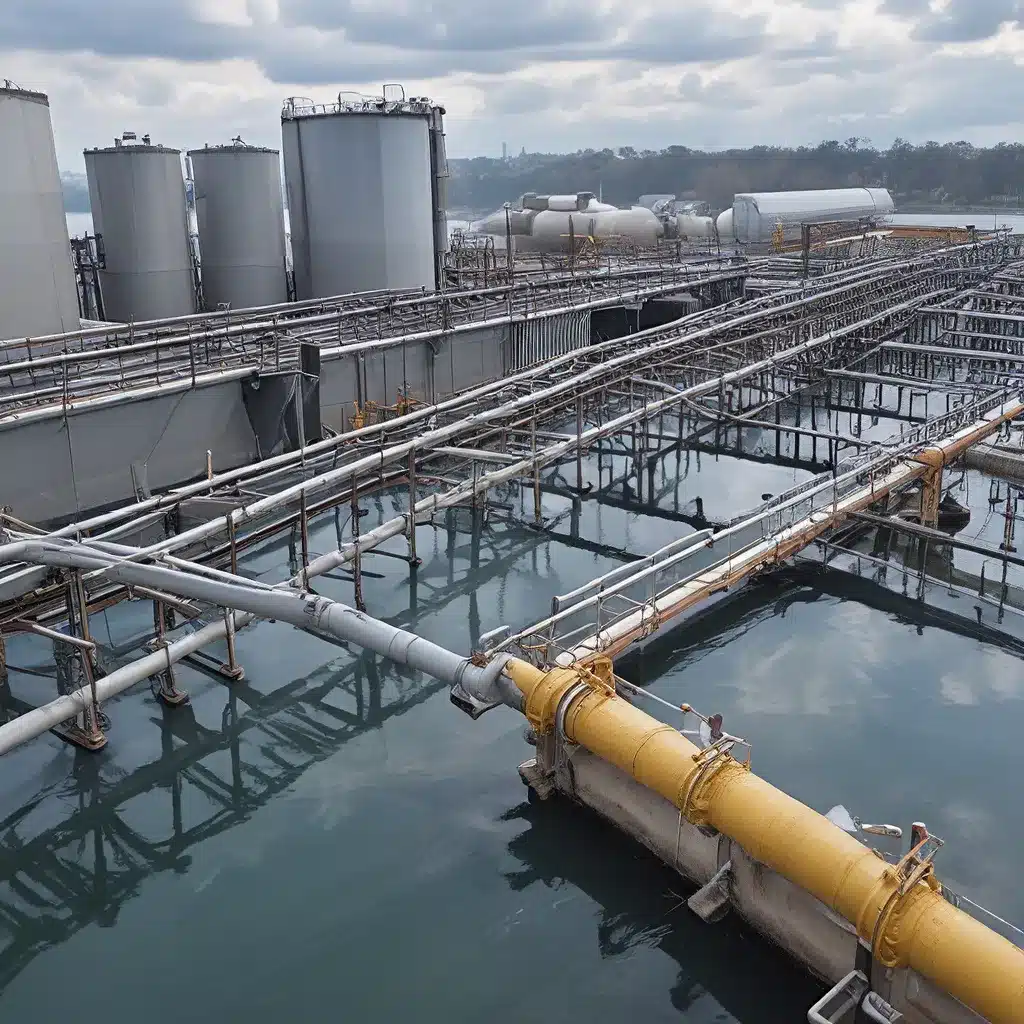
Predictive Maintenance: The Crystal Ball of Water Treatment
Have you ever found yourself staring at a leaky faucet or a clogged pipe, wondering when it will finally decide to give up on you? As someone who’s passionate about water treatment, I can attest that managing the intricate web of pipes, valves, and machinery in a water treatment facility is no easy feat. But what if I told you there’s a way to peer into the future and predict when that faucet will start dripping or when that pump will begin to falter?
Enter the world of predictive maintenance – the crystal ball of the water treatment industry. By harnessing the power of data analytics, sensors, and automation, water treatment facilities can now unlock a whole new level of efficiency, cost-savings, and environmental sustainability. It’s like having a crystal ball that tells you exactly when your equipment is going to need some TLC, before it even starts to show signs of wear and tear.
The Rise of Digitalization in Water Treatment
As the industry has evolved, we’ve seen a surge in the adoption of digital technologies in water treatment facilities. Gone are the days of manual labor, where operators would physically inspect equipment and make adjustments based on their gut instinct. Today, water treatment is all about data, analytics, and automation.
Imagine a world where your water treatment system can continuously monitor itself, adjusting chemical dosages, flow rates, and other parameters on the fly to maintain optimal efficiency. That’s the power of digitalization – it’s like having a team of expert technicians working around the clock to keep your facility running at its best.
But it’s not just about the technology itself. Digitalization also enables water treatment facilities to stay ahead of the curve when it comes to compliance. By providing real-time data and automated reporting, plant operators can ensure that their discharge is always within regulatory limits, reducing the risk of costly fines and penalties.
Predictive Maintenance: The Key to Unlocking Efficiency
So, how exactly does predictive maintenance work in the context of water treatment? It all starts with the data. By installing a network of sensors throughout your facility, you can collect a wealth of information about the performance and condition of your equipment. From flow rates and pressure levels to vibration patterns and energy consumption, every aspect of your water treatment process can be closely monitored.
This data is then analyzed using advanced analytics and machine learning algorithms, which can identify patterns and trends that would be nearly impossible for a human operator to spot. The system can then use this information to predict when a piece of equipment is likely to fail, allowing you to schedule maintenance before a breakdown occurs.
Imagine the cost savings and operational efficiency you could unlock by preventing a major equipment failure. No more unexpected downtime, no more rushed, emergency repairs, and no more lost productivity. With predictive maintenance, you can plan your maintenance schedule with surgical precision, ensuring that every component in your facility is always running at its best.
The Environmental Benefits of Predictive Maintenance
But the benefits of predictive maintenance go beyond just cost savings and operational efficiency. It also has a significant impact on the environment. By optimizing the performance of your water treatment equipment, you can reduce energy consumption, minimize chemical usage, and even recover valuable resources from the wastewater stream.
For example, by closely monitoring the performance of your chemical dosing systems, you can ensure that you’re only using the minimum amount of chemicals necessary to treat the water. This not only saves you money on chemical costs, but it also reduces the environmental impact of your facility’s operations.
And the benefits don’t stop there. Predictive maintenance can also help you identify opportunities for resource recovery and reuse. By analyzing the composition of your wastewater, the system can pinpoint areas where valuable materials like metals or nutrients can be extracted and repurposed, further reducing your environmental footprint.
The Future of Predictive Maintenance in Water Treatment
As we look to the future, it’s clear that predictive maintenance is just the tip of the iceberg when it comes to the digital transformation of the water treatment industry. The rise of the Internet of Things (IoT), artificial intelligence (AI), and cloud computing are all paving the way for even more advanced solutions that can help water treatment facilities operate with unprecedented efficiency and sustainability.
Imagine a future where your water treatment system can not only predict equipment failures, but can also automatically order replacement parts, schedule maintenance, and even dispatch repair crews – all without a single human intervention. Or a world where AI-powered algorithms can optimize the entire water treatment process, from chemical dosing to energy consumption, in real-time.
While these may sound like the stuff of science fiction, the reality is that the future of water treatment is already here. And as more and more facilities embrace the power of predictive maintenance and digital transformation, the possibilities for improving the way we manage our most precious resource are truly endless.
So, if you’re a water treatment professional, I encourage you to explore the world of predictive maintenance and see how it can unlock new levels of efficiency, cost-savings, and environmental sustainability for your facility. And if you’re a homeowner or a business owner, keep an eye on the water treatment industry – the future is coming, and it’s going to be a game-changer.
Remember, you can visit Inland Waters Inc. to learn more about how predictive maintenance and digital solutions can transform the way you manage your water treatment needs.


